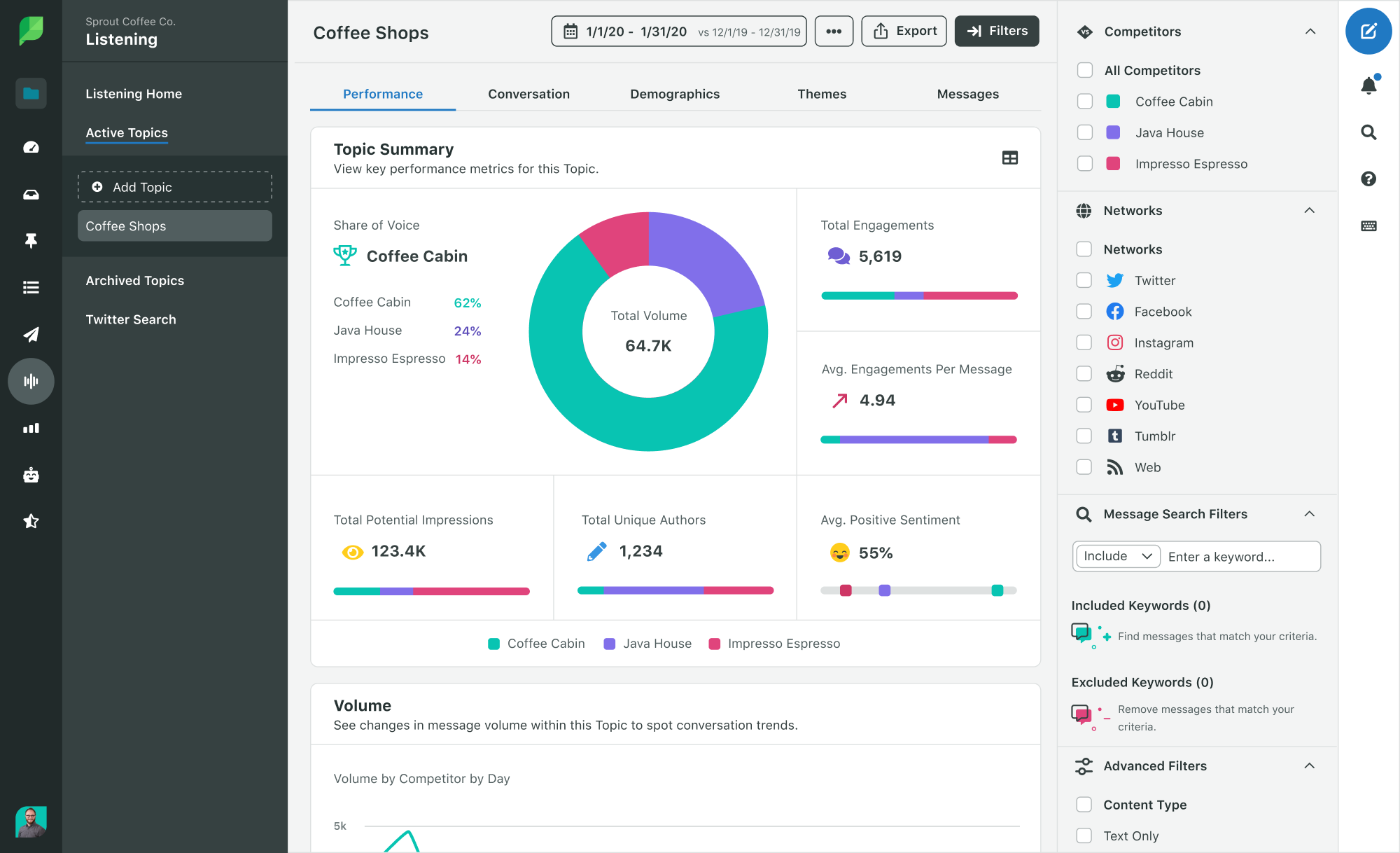Sourced from jeffbullas.com
Social media content has become the lifeblood of online marketing and personal branding, serving as a crucial bridge between brands and their audiences.
This content encompasses everything from captivating Instagram posts and insightful LinkedIn articles to engaging TikTok videos and informative tweets, each tailored to captivate and engage a target audience.
However, to navigate the ever-changing social media terrain effectively, you must embrace the concepts of a content calendar, strategic content creation, and meticulous planning.
These elements work in harmony to ensure that every post, tweet, or story is not just a drop in the digital ocean but a strategic step towards achieving overarching marketing and branding goals.
Through this lens, we’ll explore how social media content can transform your digital footprint, enhance your brand’s visibility, and ultimately drive business success.
The Importance of a Social Media Content Calendar
A social media content calendar is an indispensable tool for any brand or content creator serious about their online presence. This calendar serves as a strategic blueprint for what, when, and where to post across various social media platforms.
It’s essentially a detailed schedule that outlines upcoming content, including posts, videos, stories, and any other social media activities planned for the future. By organizing posts in advance, the calendar aids in maintaining a consistent and cohesive brand voice across all channels.
Benefits of Using a Content Calendar Template
- Consistency: A content calendar helps maintain a regular posting schedule, which is key to building a loyal audience.
- Strategic Planning: It enables you to plan around key dates, holidays, and events, making your content more relevant and engaging.
- Efficiency: By planning content in advance, you can batch-create posts, saving time and resources.
- Collaboration: It facilitates better teamwork, allowing multiple team members to contribute, review, and approve content seamlessly.
- Analysis and Improvement: Tracking the performance of scheduled content can provide insights that help refine future content strategies.
For those looking to dive deeper into the nuts and bolts of creating and utilizing a social media content calendar, check out our dedicated article.

The Process of Social Media Content Creation
Creating engaging and relevant content for social media platforms is both an art and a science. It requires a strategic approach, creativity, and a deep understanding of your audience’s preferences and behaviors.
Follow this step-by-step guide to streamline your social media content creation process:
Step 1: Define Your Goals and Audience
Start by clarifying what you want to achieve with your social media content. Whether it’s increasing brand awareness, driving sales, or engaging with your community, having clear goals will guide your content strategy. Next, understand your audience: their interests, pain points, and what they value in social media content.
Step 2: Use a Content Planner
A content planner is crucial for organizing your content creation process. It helps you visualize your strategy over time and ensures you cover a variety of content types and themes. Your planner should include key dates, themes, and the platforms where each piece will be published.
Step 3: Brainstorm Content Ideas
With your goals and audience in mind, brainstorm content ideas that align with your brand’s message and your audience’s interests. Consider using tools like social media listening platforms, competitor analysis, and trend research to generate fresh, relevant ideas. Encourage team brainstorming sessions for diverse perspectives.
Step 4: Create a Content Mix
Plan for a balanced mix of content types, such as educational posts, entertaining videos, inspiring stories, and interactive polls or quizzes. This diversity keeps your social media feeds dynamic and engaging for your audience. Ensure your content mix aligns with the platforms’ strengths and audience preferences.
Step 5: Develop and Schedule Your Content
With your ideas in place, start creating your content. Focus on quality and consistency, ensuring each piece reflects your brand’s voice and values. Use visuals, compelling captions, and strong calls-to-action to enhance engagement. Once your content is ready, schedule it according to your content calendar to maintain a consistent online presence.
Step 6: Monitor and Adapt
After publishing your content, monitor its performance closely. Analyze metrics such as engagement rates, shares, and comments to understand what resonates with your audience. Use these insights to adapt your future content, focusing on what works best and exploring new ideas to keep your audience engaged.
How to Create Content for Social Media
Here are practical tips and techniques for crafting visual content, written posts, and interactive media that can elevate your social media presence.
Creating Visual Content
- Use High-Quality Images: Clear, high-resolution images are more likely to catch the eye of your audience. Use professional photography or high-quality stock images when original photos aren’t available.
- Embrace Brand Consistency: Apply your brand’s color scheme, logos, and aesthetic to your visuals to enhance brand recognition.
- Leverage Design Tools: Tools like Canva or Adobe Spark make it easy to create engaging graphics, even if you’re not a professional designer. Use templates and customize them to fit your brand.
- Experiment with Video: Video content has a higher engagement rate. Create short, engaging clips that convey your message within the first few seconds. Tools like InShot or Adobe Premiere Rush can help you edit videos for social media.

Crafting Written Posts
- Be Concise and Clear: Social media users tend to scroll quickly. Make your point clearly and succinctly to grab attention.
- Use a Conversational Tone: Write as if you’re speaking directly to your audience. A friendly, relatable tone can make your brand feel more approachable.
- Incorporate Storytelling: People love stories. Share behind-the-scenes glimpses, customer testimonials, or the inspiration behind your products to create an emotional connection.
- Utilize Hashtags and Emojis: Use relevant hashtags to increase the visibility of your posts and emojis to add personality and emotion, making your content more relatable.
Creating Interactive Media
- Polls and Quizzes: Use polls and quizzes to engage your audience directly and gather valuable feedback. These can be fun, related to your industry, or used to understand your audience’s preferences.
- Live Streaming: Platforms like Instagram, Facebook, and Twitch offer live streaming capabilities. Use these to host Q&A sessions, product demonstrations, or simply to chat with your followers in real-time.
- User-Generated Content: Encourage your followers to share their own content related to your brand, using a specific hashtag. This not only boosts engagement but also provides you with a wealth of authentic content to share.
- Interactive Stories: Take advantage of the interactive features available in Instagram and Facebook stories, such as swipe-up links, question stickers, and polls, to engage with your audience dynamically.

General Tips for Content Creation
- Understand Your Audience: Tailor your content to the interests and needs of your audience. Use analytics to track which types of content perform best and refine your strategy accordingly.
- Stay Updated on Trends: Keep an eye on current trends and adapt your content to stay relevant. However, ensure that any trend you follow aligns with your brand identity and values.
- Engage with Your Followers: Make it a habit to respond to comments and messages. Engagement builds community and loyalty, encouraging more interaction with your content.
Creating content for social media is an ongoing process of learning, experimenting, and adapting. By employing these tips and remaining attuned to your audience’s preferences, you can produce content that not only resonates but also drives engagement and growth for your brand on social media platforms.
Crafting a Social Media Content Strategy
A well-crafted social media content strategy is the backbone of successful digital marketing efforts. It’s a comprehensive plan that guides the creation, delivery, and management of your online content, tailored to engage your target audience and achieve your business objectives.
Here are the critical components of a successful content strategy, along with insights on adapting strategies across different platforms.
Goal Setting
The first step in crafting your strategy is to define clear, measurable goals. Are you looking to increase brand awareness, generate leads, drive website traffic, or boost sales? Setting specific objectives will help you tailor your content to meet these goals and measure your success.
Audience Targeting
Understanding your audience is crucial. Develop detailed audience personas that include demographic information, interests, pain points, and social media habits. This knowledge allows you to create content that resonates with your audience, making it more likely to engage and convert.
Content Planning and Creation
Based on your goals and audience insights, plan the types of content that will best resonate with your followers. Your content plan should include a mix of formats (e.g., posts, videos, stories) and themes (e.g., educational, inspirational, promotional) tailored to each platform’s unique environment and audience preferences.
Platform Strategy
Each social media platform has its characteristics and user base, requiring a tailored approach:
- Instagram: Focus on high-quality visuals and stories for a younger, visually-oriented audience.
- LinkedIn: Share professional, industry-related content for B2B audiences.
- Facebook: Leverage a mix of content types, including videos and curated content, to engage a broad demographic.
- Twitter: Utilize timely, conversation-driven posts for real-time engagement.
- TikTok: Embrace creative, trend-driven content to capture the attention of a younger audience.
Examples of Successful Social Media Content
Now let’s explore a few examples of successful social media content and dissect the elements that contributed to its success. By understanding these principles, you can apply similar strategies to elevate your social media content.
Example 1: User-Generated Content Campaign
- Case: A lifestyle brand launches a hashtag campaign encouraging users to share their own photos using the brand’s products in their daily lives.
- Success Factors: Authenticity, community engagement, and brand visibility.
- Lesson: User-generated content not only provides authentic material for your brand but also fosters a sense of community and belonging among your audience. Encourage your followers to share their experiences with your brand, and feature their content on your platforms to boost engagement and trust.

Example 2: Behind-the-Scenes Stories
- Case: A tech company shares behind-the-scenes stories on Instagram, showcasing its team’s daily activities, product development processes, and office culture.
- Success Factors: Transparency, humanization of the brand, and insider look.
- Lesson: Giving your audience a peek behind the curtain humanizes your brand and builds a deeper connection with your audience. Share stories that showcase the people and processes behind your products or services to create relatable and engaging content.
Example 3: Interactive Polls and Quizzes
- Case: A beauty brand uses Instagram Stories to run polls and quizzes about skincare routines and preferences.
- Success Factors: Interactivity, personalized engagement, and valuable insights.
- Lesson: Interactive content like polls and quizzes engages your audience and encourages them to participate actively in your content. Use these tools to gather insights about your audience’s preferences and tailor your offerings accordingly.

Example 4: Educational Video Series
- Case: A financial services company creates a series of short, educational videos explaining complex financial concepts in simple terms.
- Success Factors: Value-driven content, simplicity, and shareability.
- Lesson: Educational content that provides real value to your audience is more likely to be shared and remembered. Break down complex topics into digestible pieces to position your brand as a helpful resource in your industry.
Example 5: Influencer Collaborations
- Case: A fashion retailer partners with influencers to create “day in the life” content featuring their clothing line.
- Success Factors: Credibility, wider reach, and aspirational content.
- Lesson: Collaborating with influencers who align with your brand values and aesthetics can introduce your products to a broader audience in a credible and aspirational manner. Choose partners who resonate with your target audience for maximum impact.

Example 6: Real-time Engagement Posts
- Case: A snack brand uses Twitter to engage with current events and trends, creating humorous and timely content related to their products.
- Success Factors: Timeliness, humor, and brand personality.
- Lesson: Leveraging current events and trends can make your brand feel relevant and engaged with the wider cultural conversation. Use humor and personality to make your content stand out and encourage sharing.
These examples illustrate the power of creativity, authenticity, and strategic thinking in social media content creation.
By applying these lessons—focusing on genuine engagement, providing value, and leveraging the unique features of each platform—you can craft content that resonates with your audience and drives meaningful engagement.
Becoming a Social Media Content Creator
Think you have what it takes to become a social media content creator?
At the heart of effective content creation lies the ability to tell compelling stories, engage with your audience, and adapt to the ever-changing digital landscape. Here’s a look at the essential skills, tools, and attitudes needed to succeed in this dynamic field.
Essential Skills for Content Creators
- Creativity and Innovation: The ability to generate fresh, engaging content ideas that stand out in a crowded social media space is crucial. Creativity isn’t just about what you create but also how you present familiar concepts in new and exciting ways.
- Strategic Planning: Understanding the big picture, setting achievable goals, and planning content that aligns with these objectives are vital skills for any content creator.
- Technical Proficiency: Familiarity with social media platforms, basic graphic design, video editing, and analytics tools is essential to create, publish, and analyze content effectively.
- Adaptability: Social media trends and algorithms change rapidly. Being adaptable and willing to learn and experiment with new content formats and platforms can set you apart.
- Communication and Engagement: The ability to authentically engage with your audience, respond to feedback, and build a community around your brand is key to long-term success.
Final thoughts
When it comes to creating social media content, the keys to captivating and retaining an engaged audience lie in strategic planning, creativity, and consistency.
By embracing the strategies and tools outlined, content creators and business owners alike can elevate their social media marketing, turning casual followers into loyal advocates.
Whether you’re crafting your next viral post or planning a comprehensive campaign, remember that success on social media is a blend of artful expression and meticulous strategy. So, take these insights, apply them to your content creation efforts, and watch as your social media presence flourishes.



![The Four Most Effective Types of Social Media Content [Infographic]](https://mediastreet.ie/wp-content/uploads/2024/01/Social-Media.png)








